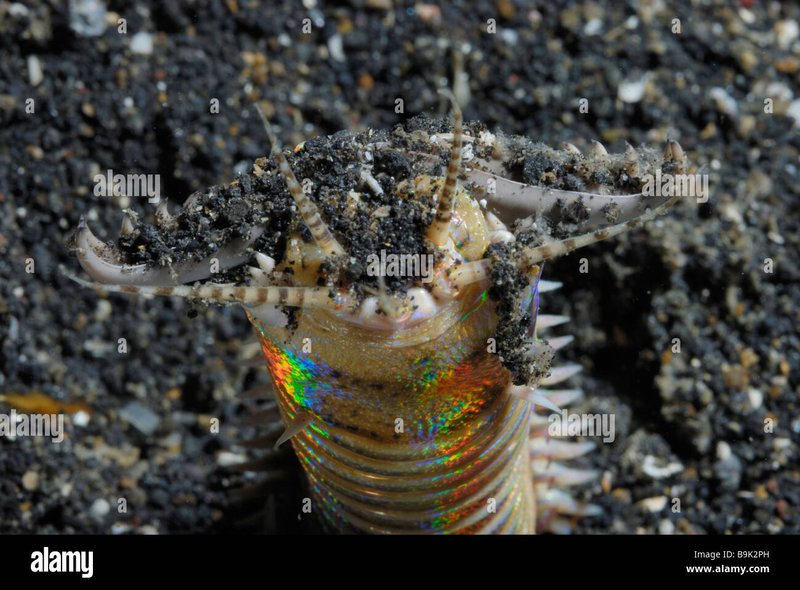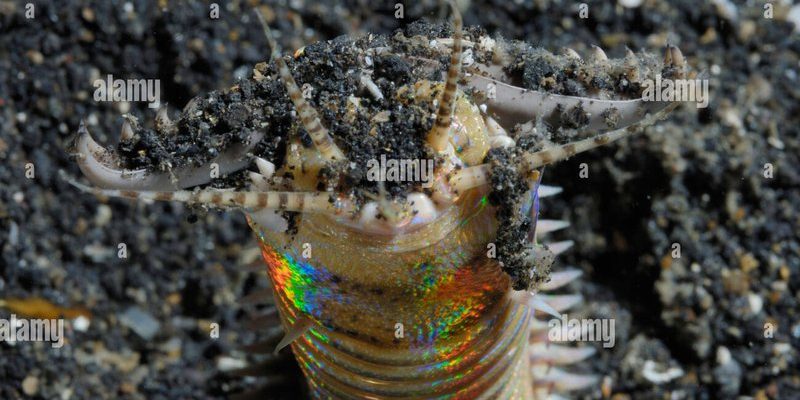
Bobbit worms are found mostly in tropical and subtropical waters, making them a bit elusive for casual observers. If you’re curious about where to spot these incredible worms, you’re in the right place! In this article, we’ll explore the best locations around the world where you can catch a glimpse of these stunning creatures and some tips for observing them safely and respectfully.
Understanding Bobbit Worms
Before we jump into the locations, let’s get to know Bobbit worms a bit better. These marine worms, scientifically known as *Eunice aphroditois*, can grow up to ten feet long, although most are around three feet. They have a unique appearance, with long, segmented bodies and a colorful array of bristles that help them blend into their surroundings. You might think of them as the ocean’s hidden predators, lying in wait for unsuspecting fish to swim nearby.
Their hunting technique is something out of a nature documentary. Bobbit worms extend their bodies partially out of the sand, camouflaged in their environment. When a fish or other prey comes too close, these worms strike with lightning speed. The sudden movement can be startling, as they grip their prey with sharp jaws. It’s a thrilling sight, but remember, this is part of their natural behavior.
You might be wondering why they’re named “Bobbit worms.” The name comes from a rather infamous incident involving a certain John Wayne Bobbitt. It’s definitely a memorable name that sticks, and it may even spark some curiosity about their ruthless hunting methods.
Best Locations to Observe Bobbit Worms
If you’re eager to spot Bobbit worms in the wild, knowing where to look is half the battle. Here are some prime locations:
- The Great Barrier Reef, Australia: This iconic reef is a hotspot for marine life, including Bobbit worms. The diverse ecosystem provides ample opportunity for these worms to thrive.
- Carribean Reefs: Many Caribbean islands, like the Bahamas or Cozumel, are home to stunning coral reefs where Bobbit worms can be found hidden among the corals and rocks.
- Red Sea, Egypt: Known for its crystal-clear waters and rich biodiversity, the Red Sea is another fantastic spot. The warm waters create an ideal environment for Bobbit worms to live and hunt.
- Pacific Coast of Central America: Areas around Belize and Honduras are also known for sightings. The warm, shallow waters offer the perfect habitat for these fascinating creatures.
- Coral Triangle, Southeast Asia: This region, covering parts of Indonesia, Malaysia, and Papua New Guinea, boasts some of the richest marine biodiversity. It’s a great place to spot Bobbit worms among the vibrant coral reefs.
Each of these locations offers unique opportunities to observe Bobbit worms in their natural habitats. Whether you’re snorkeling, scuba diving, or simply exploring tide pools, keep your eyes peeled!
Underwater Exploration Techniques
Now that you know where to find these worms, let’s dive into how to observe them safely and responsibly. Here are some techniques and tips:
1. **Snorkeling**: Snorkeling in shallow waters can be one of the best ways to spot Bobbit worms. Look for sandy or muddy areas near coral reefs, where they might blend in.
2. **Scuba Diving**: For a closer look, consider scuba diving. This allows you to explore deeper areas where Bobbit worms may be hiding. Just remember to keep a respectful distance so you don’t disturb their habitat.
3. **Night Observation**: Many marine animals are more active at night, including Bobbit worms. If you’re up for an adventure, a night dive could provide a thrilling way to observe their hunting techniques.
4. **Tide Pooling**: In some regions, you may find Bobbit worms in tide pools during low tide. Carefully check the edges of the tide pools, but be sure to avoid disturbing the environment.
Always be mindful of marine conservation. Protecting their habitats is crucial to ensuring that future generations can enjoy observing these incredible creatures.
How to Spot Bobbit Worms in the Wild
Finding Bobbit worms can be tricky since they spend most of their time hidden in the sand. Here are some tips for spotting them:
– **Look for their burrows**: If you see small, tube-like structures or holes in the sand, you might be close to a Bobbit worm’s home. Their burrows can be a telltale sign of their presence.
– **Watch for movement**: If you’re in the water, keep an eye out for sudden movements. Bobbit worms can strike quickly, often snapping up prey as they emerge from their hiding spots.
– **Be patient**: Sometimes, it’s all about being in the right place at the right time. Spend some time quietly observing your surroundings in areas where you suspect they might be.
You might not see a Bobbit worm every time you go looking, but that’s part of the thrill of wildlife observation. It’s all about appreciating the beauty of nature.
Respecting the Ecosystem
As much as you may want to observe Bobbit worms, it’s crucial to do so responsibly. Here are a few things to keep in mind:
– **Don’t disturb their habitat**: Avoid digging up sand or disturbing rocks and coral where Bobbit worms live. It’s essential to leave their environment untouched.
– **Observe from a distance**: If you spot a Bobbit worm, try to maintain a respectful distance. This not only protects the worm but also allows you to see its natural behavior without interference.
– **Educate others**: Share your experiences and knowledge with fellow nature lovers. The more people understand the importance of marine ecosystems, the better chance these species have for survival.
Being a responsible observer means appreciating these magnificent creatures without causing harm.
Bobbit worms may seem like oddities of the ocean, but they play a vital role in the marine ecosystem. By exploring the right locations and using respectful techniques, you can enjoy observing these fascinating creatures in the wild. Remember, every moment spent watching a Bobbit worm is a peek into the wonders of our planet’s underwater realm.
Whether you’re a seasoned diver or just dipping your toes into marine exploration, keep your curiosity alive, and who knows—you might just have an encounter with one of nature’s most extraordinary predators. Happy observing!

